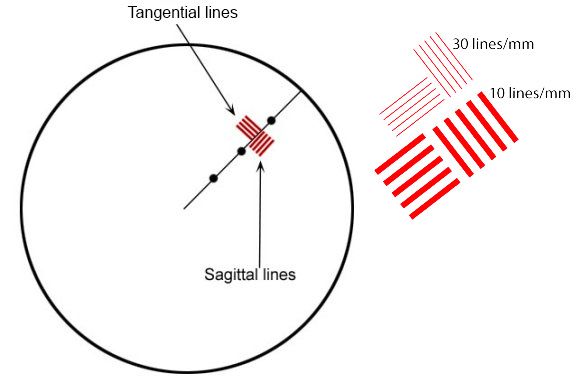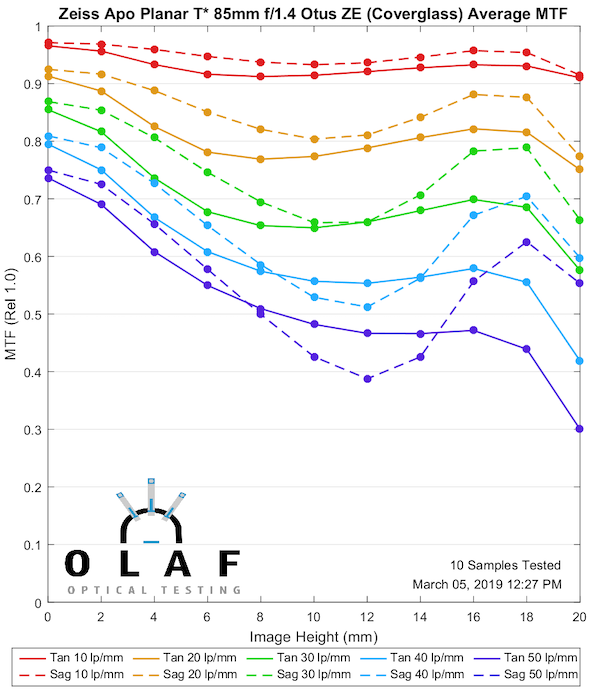Just MTF Charts
Just MTF Charts: Zeiss SLR Lenses

Please note: The Zeiss Batis and Loxia Lenses will be presented with the Sony FE mount prime lenses.
Over the last 5 or 6 years we’ve run more MTF tests than anyone in the world. We do a lot of stuff with those results, but the one thing that’s pertinent is we publish them on our blog posts. I did some checking and as best I can estimate we’ve published mulitple-sample MTFs on over 100 lenses. You got it – I can’t find them all any better than you can.
Not a week goes by that someone doesn’t ask for MTF results for this lens or that because they can’t find them online. Our blog isn’t good at organizing lots of posts, and, well, to be honest, neither am I. While I consider myself to have an organized scientific mind, I’ll admit my blog tends to be a Joycean train-of-thought thing idly wandering through whatever interests me at the moment.
Things are even worse because over the years we’ve improved our techniques. There are still some lenses where if you search carefully you’ll find old results. You can usually tell because the graph colors are different, like this:
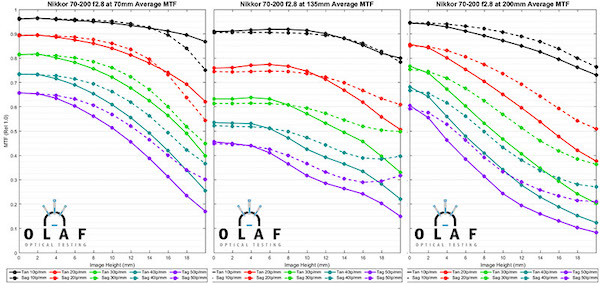
Lensrentals.com, 2015
It’s not a huge difference, but techniques and standards changed slightly after this time. Testing is changing a little bit going forward, too, since we’re transitioning to Rapid MTF measurements which are more valuable to us, but different.
OK, I just made a short story long. Let’s try again. I’m going to gather and publish all of our MTF results in a series of posts so that they will be at least easy to find. I’m going to group them by brand and type. No comparisons, no commentary, just the test results for you to use and abuse as you see fit.
Today, we’ll look at the Zeiss SLR prime lenses because only the old-style test results have been published for several of them. Also, starting with Zeiss lenses will give Sony fans an opportunity to comment about how much better their cameras are than other brands, because that’s very important to them.
A Quick How to on Reading MTF ChartsIf you’re new here, you’ll see we have a scientific methodology to our approach, and use MTF charts to measure lens resolution and sharpness. All of our MTF charts test ten of the same lenses, and then we average out the results. MTF (or (or Modulation Transfer Function) Charts measure the optical potential of a lens by plotting the contrast and resolution of the lens from the center to the outer corners of the frame. An MTF chart has two axis, the y-axis (vertical) and the x-axis (horizontal). The y-axis (vertical) measures how accurately the lens reproduces the object (sharpness), where 1.0 would be the theoretical “perfect lens”. The x-axis (horizontal) measures the distance from the center of a lens to the edges (measured in millimeters where 0mm represents the center, and 20mm represents the corner point). Generally, a lens has the greatest theoretical sharpness in the center, with the sharpness being reduced in the corners. Tangential & Sagittal LinesThe graph then plots two sets of five different ranges. These sets are broken down into Tangential lines (solid lines on our graphs) and Sagittal (dotted lines on our graphs). Sagittal lines are a pattern where the lines are oriented parallel to a line through the center of the image. Tangential (or Meridonial) lines are tested where the lines are aligned perpendicular to a line through the center of the image. From there, the Sagittal and Tangential tests are done in 5 sets, started at 10 lines per millimeter (lp/mm), all the way up to 50 lines per millimeter (lp/mm). To put this in layman’s terms, the higher lp/mm measure how well the lens resolves fine detail. So, higher MTF is better than lower, and less separation of the sagittal and tangential lines are better than a lot of separation. Please keep in mind this is a simple introduction to MTF charts, for a more scientific explanation, feel free to read this article. |
Zeiss SLR Prime Lenses
Note: Other than the 50mm f/1.4 and 85mm f/1.4, Milvus lenses and ZE/ZF lenses are optically the same.
Distagon 15mm f/2.8

Lensrentals.com, 2019
Distagon 18mm f3.5
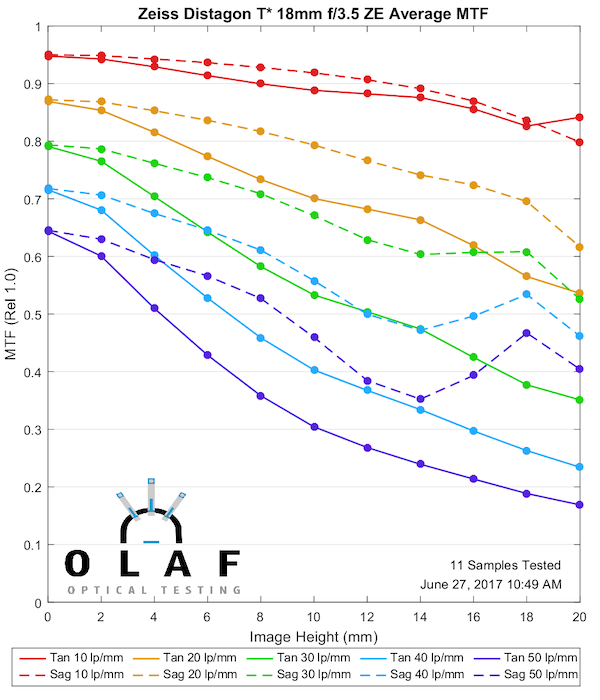
Lensrentals.com, 2019
Milvus 21mm f/2.8

Lensrentals.com, 2019
Distagon 25mm f/2.0
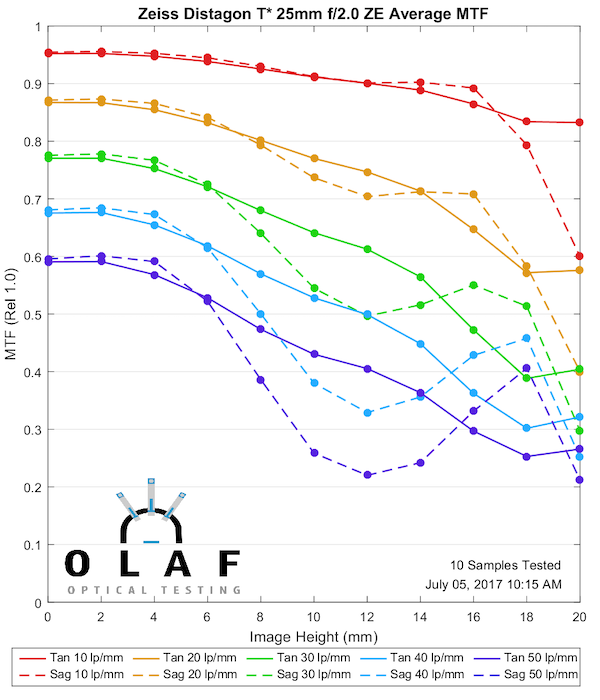
Lensrentals.com, 2019
Milvus 35mm f/1.4
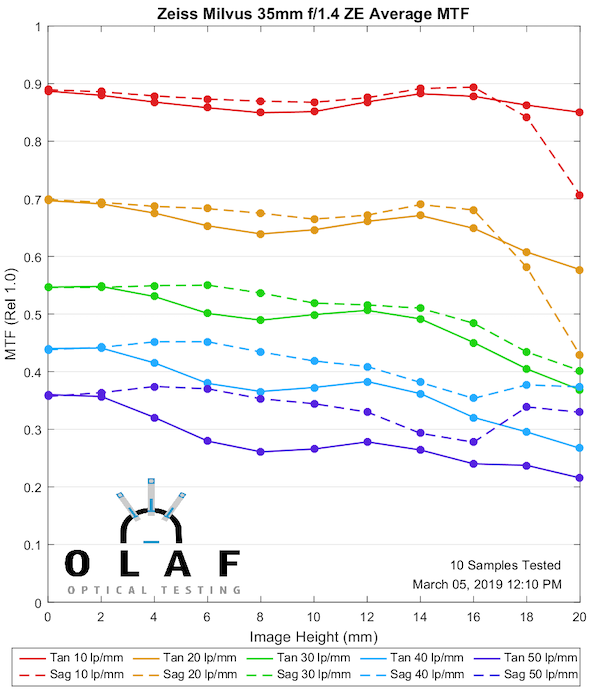
Lensrentals.com, 2019
Distagon 35mm f/2.0
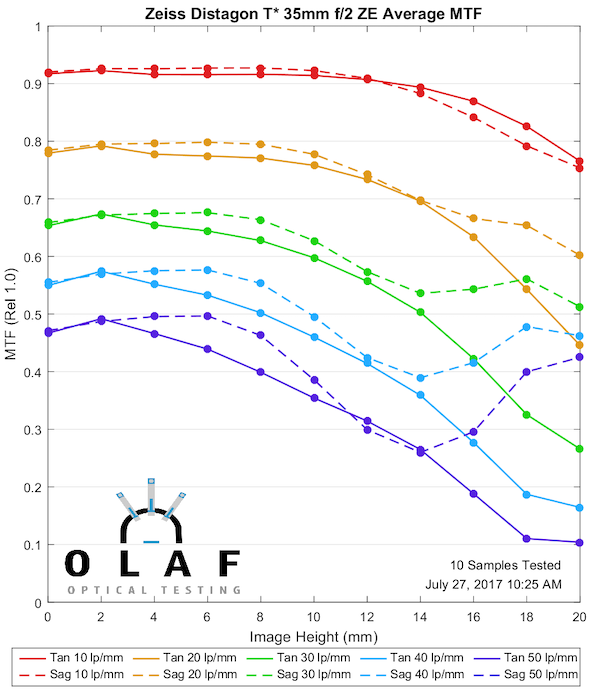
Lensrentals.com, 2019
Milvus 50mm f/1.4
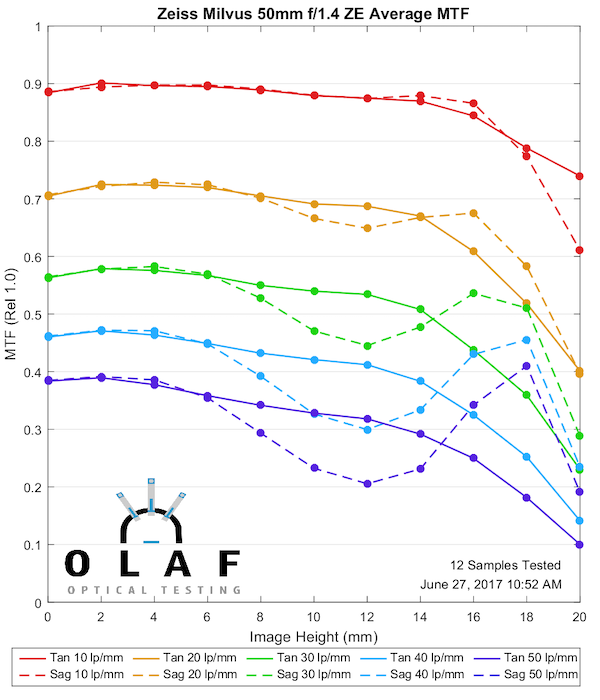
Lensrentals.com, 2019
Makro-Planar 50mm f/2.0
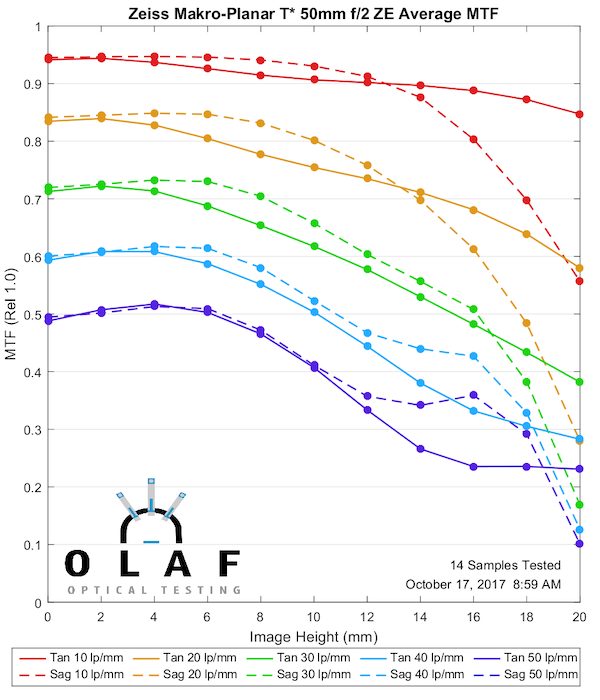
Lensrentals.com, 2019
Milvus 85mm f1.4
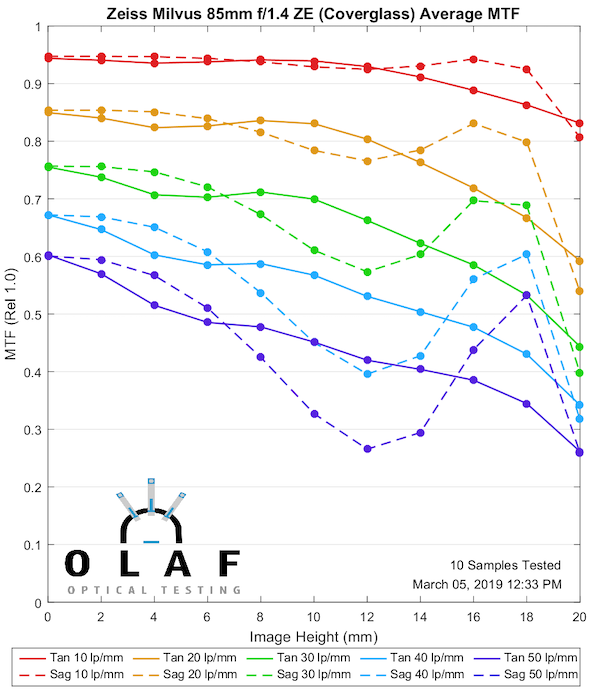
Lensrentals.com, 2019
Makro-Planar 100mm f/2.0
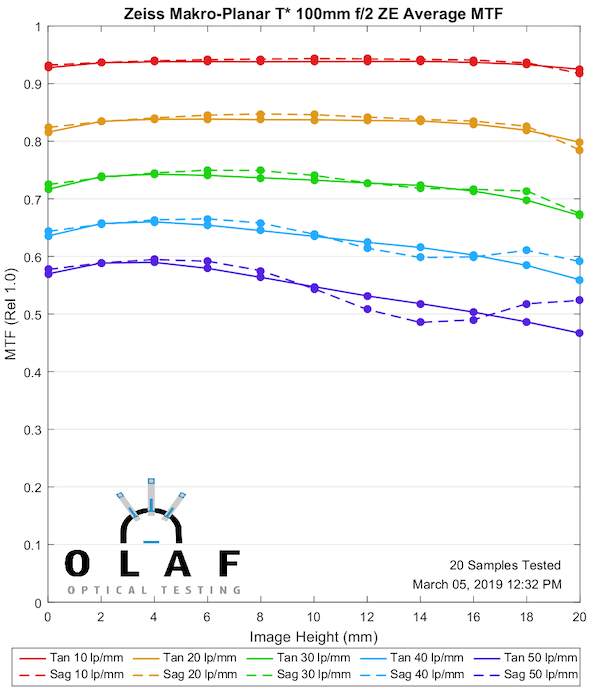
Lensrentals.com, 2019
Milvus APO Sonnar 135mm f/2
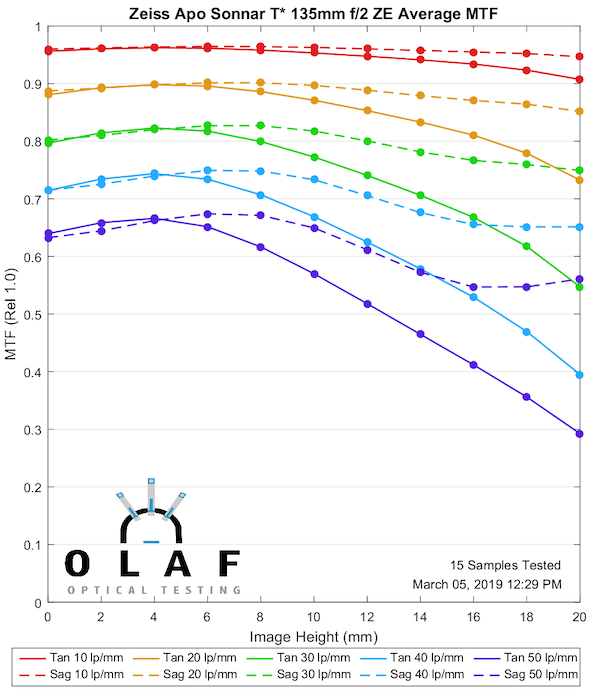
Lensrentals.com, 2019
Zeiss Otus Lenses
Otus APO Distagon 28mm f1.4
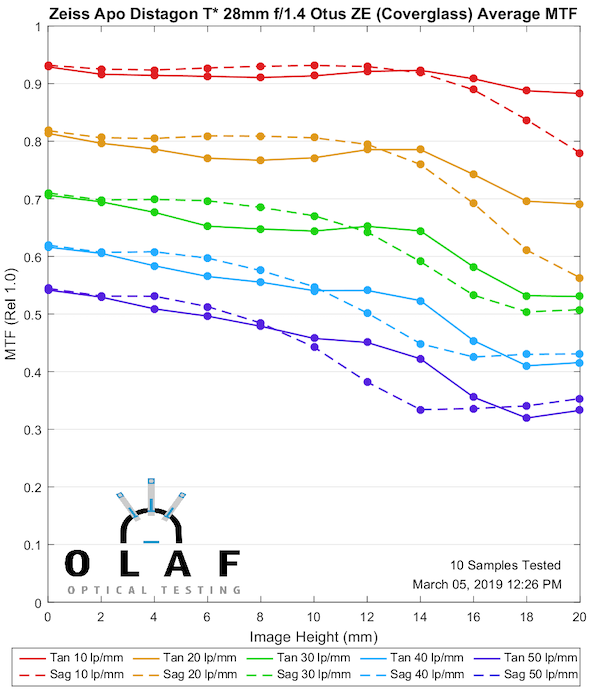
Lensrentals.com, 2019
Otus APO Distagon 55mm f1.4
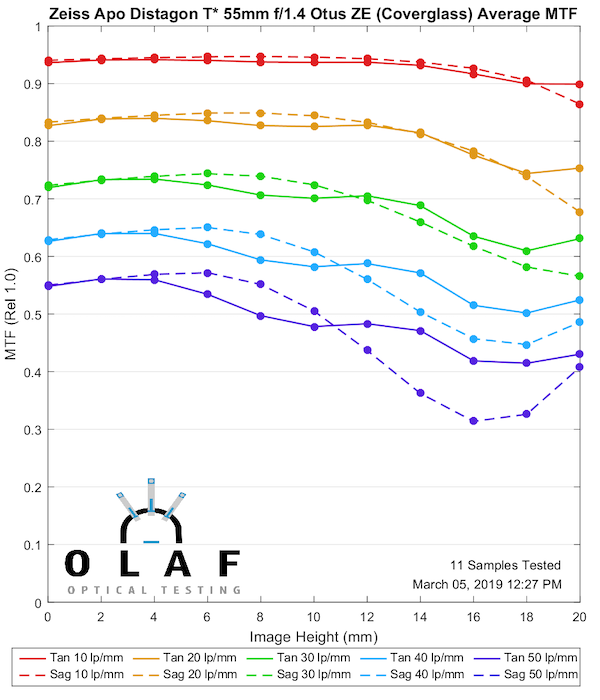
Lensrentals.com, 2019
Otus APO Planar 85mm f1.4
So that’s it for the Zeiss SLR lenses. We’ll continue, every week or so, to add other groups so that within a couple of months all of the MTF charts should be fairly easy to find.
For a look at all the Just MTF Articles we’ve done so far, be sure to check them out here.
Roger Cicala, Aaron Closz, and Brandon Dube
Lensrentals.com
March, 2019
Author: Roger Cicala
I’m Roger and I am the founder of Lensrentals.com. Hailed as one of the optic nerds here, I enjoy shooting collimated light through 30X microscope objectives in my spare time. When I do take real pictures I like using something different: a Medium format, or Pentax K1, or a Sony RX1R.
-
Roger Cicala
-
Carleton Foxx
-
Frank Kolwicz
-
Carleton Foxx
-
Carleton Foxx
-
Brandon Dube
-
Roger Cicala
-
Roger Cicala
-
Brandon Dube
-
Craig
-
Andre Yew
-
Roger Cicala
-
xWidget
-
Andreas Werle
-
Roger Cicala
-
Brian Smith
-
Roger Cicala
-
Andrej Belic
-
mikko
-
Roger Cicala
-
Roger Cicala
-
David Braddon-Mitchell
-
Roger Cicala
-
Andre Yew
-
Neal G
-
Lee
-
Roger Cicala
-
Andre Yew
